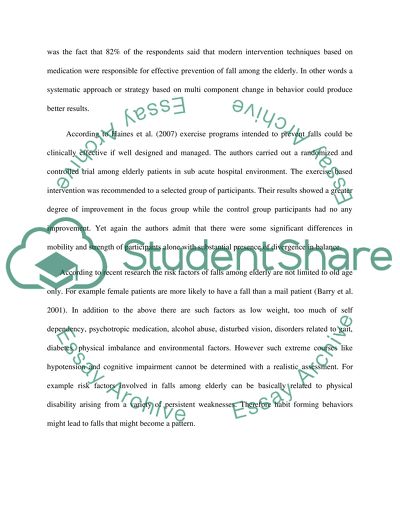Cite this document
(“Prevention of Falls in Elderly Care Essay Example | Topics and Well Written Essays - 2000 words”, n.d.)
Prevention of Falls in Elderly Care Essay Example | Topics and Well Written Essays - 2000 words. Retrieved from https://studentshare.org/miscellaneous/1500671-prevention-of-falls-in-elderly-care
Prevention of Falls in Elderly Care Essay Example | Topics and Well Written Essays - 2000 words. Retrieved from https://studentshare.org/miscellaneous/1500671-prevention-of-falls-in-elderly-care
(Prevention of Falls in Elderly Care Essay Example | Topics and Well Written Essays - 2000 Words)
Prevention of Falls in Elderly Care Essay Example | Topics and Well Written Essays - 2000 Words. https://studentshare.org/miscellaneous/1500671-prevention-of-falls-in-elderly-care.
Prevention of Falls in Elderly Care Essay Example | Topics and Well Written Essays - 2000 Words. https://studentshare.org/miscellaneous/1500671-prevention-of-falls-in-elderly-care.
“Prevention of Falls in Elderly Care Essay Example | Topics and Well Written Essays - 2000 Words”, n.d. https://studentshare.org/miscellaneous/1500671-prevention-of-falls-in-elderly-care.


